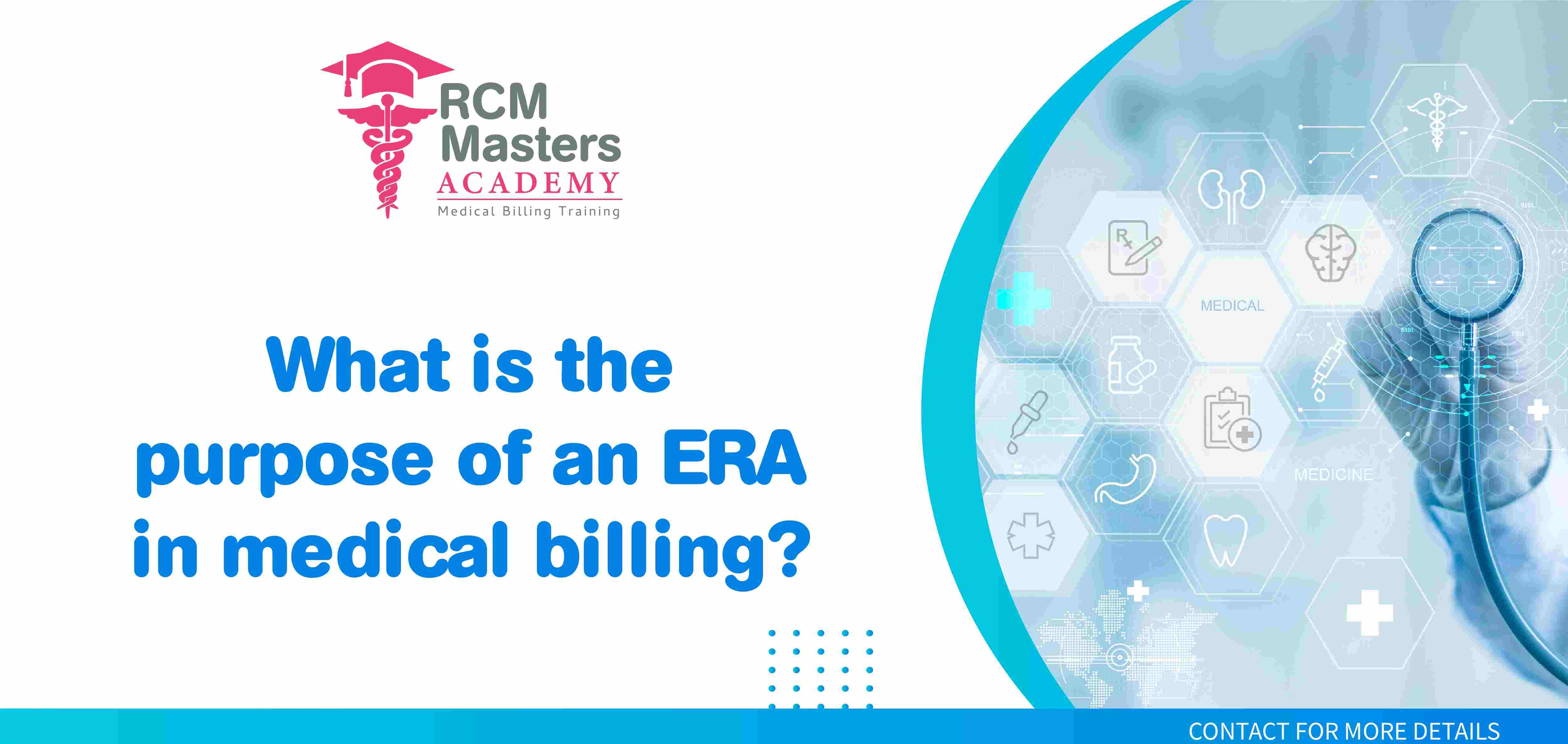 info@rcmmastersacademy.com
info@rcmmastersacademy.com

The healthcare industry is a complex system that involves several stakeholders, including patients, healthcare providers, insurance companies, and government agencies. One of the critical aspects of the healthcare system is medical billing, which involves submitting claims for reimbursement of healthcare services provided to patients. The process of medical billing can be challenging, and errors can lead to delayed payments and denials. This is where the Electronic Remittance Advice (ERA) comes into play. We will discuss the purpose of an ERA in medical billing.
An ERA is an electronic document that healthcare providers receive from insurance companies after submitting a claim for reimbursement of healthcare services provided to patients. The ERA contains detailed information about the claim, including the amount paid, the reason for any denials or adjustments, and the patient's responsibility for payment. The ERA is a critical tool in the medical billing process as it helps healthcare providers reconcile payments received from insurance companies with the claims they have submitted.
One of the primary purposes of an ERA in medical billing is to improve the efficiency of the billing process. In the past, healthcare providers would receive paper-based explanations of benefits (EOBs) from insurance companies, which would take a long time to process and could be lost or misplaced. The ERA, being electronic, can be processed much more quickly and is less likely to be lost. This means that healthcare providers can receive payments more quickly, improving their cash flow and reducing the administrative burden of medical billing.
Another purpose of an ERA is to reduce errors and inaccuracies in the billing process. With paper-based EOBs, it was easy for errors to occur, such as incorrect payment amounts or denials for claims that should have been paid. The ERA, being electronic, is less prone to errors, as it is generated automatically based on the information submitted in the claim. This reduces the likelihood of errors and can help healthcare providers get paid more accurately and quickly.
The ERA also helps to improve transparency in the billing process. With paper-based EOBs, it was often challenging for healthcare providers to understand why a claim had been denied or adjusted. The ERA provides detailed information about the reason for any denials or adjustments, making it easier for healthcare providers to understand and address any issues with the claim. This can help to improve the accuracy of future claims and reduce the likelihood of denials or adjustments.
In addition to the benefits for healthcare providers, the ERA also benefits patients. By providing detailed information about the amount paid and the patient's responsibility for payment, the ERA helps patients understand their healthcare costs and make informed decisions about their healthcare. This can help to reduce confusion and frustration for patients and improve their overall healthcare experience.
In conclusion, the Electronic Remittance Advice (ERA) plays a critical role in the medical billing process. Its purpose is to improve the efficiency, accuracy, and transparency of the billing process, benefitting both healthcare providers and patients. With the increasing adoption of electronic health records (EHRs) and other digital technologies in the healthcare industry, the ERA is becoming an increasingly important tool in the medical billing process. Healthcare providers who embrace this technology will be better positioned to provide high-quality care to their patients while managing their financial resources effectively.
You can enroll for our Online Medical Billing Training here: